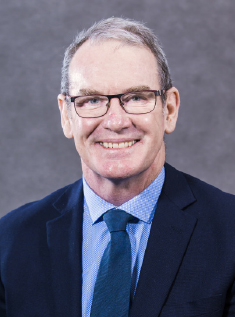 The last 3 years have presented critical challenges for emergency management and communities throughout Australia.
The last 3 years have presented critical challenges for emergency management and communities throughout Australia.
Repeat and competing, compounding and cascading disasters have stretched the capability and capacity of communities to respond and left them with little to no time to recover.
The effects from bushfires, floods and a pandemic, to name a few, have all threatened the interconnected nature of our communities, economies, infrastructure and natural systems. In 2022 alone, 315 local government areas suffered the impact of a third consecutive La Niña, some not just once, but multiple times.
Since the start of the most recent floods in September, I’ve visited flood-affected regions across NSW and Victoria and witnessed first-hand the damage and impact to communities.
The scale, duration and extent of last year’s floods highlighted the challenges of living on our floodplains. The overwhelming message from affected communities is that they want to feel safer, stronger and more connected.
As our nation ages and population continues to grow along our coast and on our floodplains, we have important and urgent strategic decisions to make about where and how we live. To better prepare for a future filled with more frequent and intense disasters, our settlements and the systems that allow them to function and flourish will need to adapt. This will require all members of society to be part of the solution.
This is why the National Emergency Management Agency was established; to provide national leadership and to coordinate, drive and sustain collective action that enhances our capabilities, better integrates our systems, and reduces disaster risk.
We are guided by 3 strategic actions. First, we will work to ensure the nation has scalable emergency management capabilities that can be deployed in any location, at any time, and in the event of any threat, during the response, relief, recovery, reconstruction, risk reduction, prevention and preparedness phases. We have started by strengthening our national emergency workforce capability and capacity, which will provide additional resources to support relief and recovery during disasters of any scale.
Second, we will continue to champion and facilitate locally led response and recovery, which occurs when all groups – from individuals to households, industry, non-government organisations and local governments – take collective action so that communities become safer, stronger and more connected. While we continue to work closely with our partners across these groups, we’re forging new partnerships and connections so that we can replicate the collective action that we’ve seen succeed in regions like the Northern Rivers, Western NSW, Victoria and Tasmania in the face of the 2022 floods. These are regions where close neighbours have been the first responders and members of the community, including individuals, the Australian Defence Force, local and state emergency services, and local business, worked house by house, street by street to commence clean-up and recovery.
Finally, we will increase investment in disaster risk reduction through a $1 billion Disaster Ready Fund so that we can build more resilient communities before disasters strike.
As emergency management practitioners and researchers, you are the Australian Government’s partners in action. Your experience, expertise and research is critical to understanding how government invests in and strengthens collective and strategic action at a community, state and national level.
The Australian Journal of Emergency Management brings your ideas to the fore and, as the first Coordinator-General of National Emergency Management Agency, I am pleased to contribute to this important publication.


